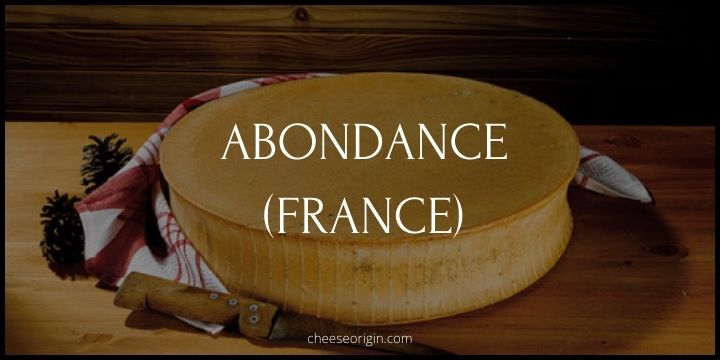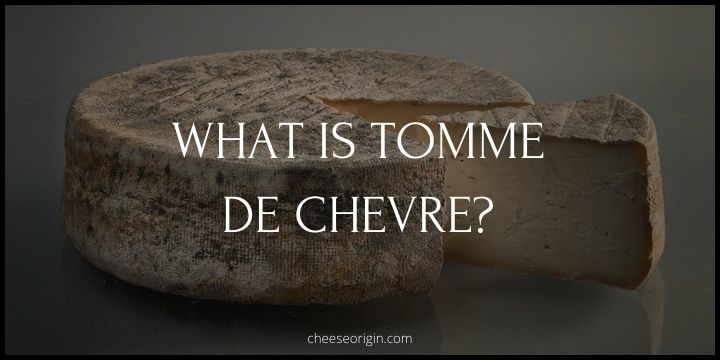What is Cotija? A Deep Dive into Mexico’s Favorite Cheese
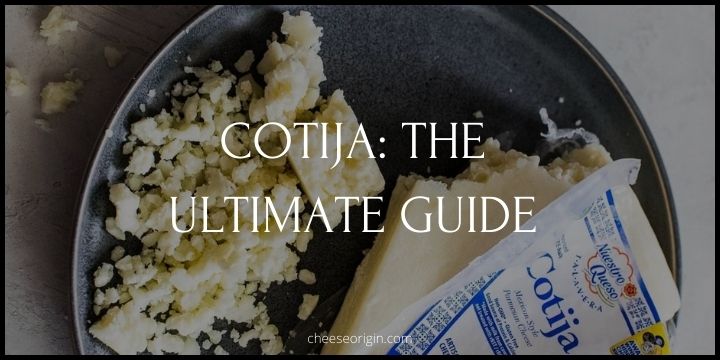
As you journey through this guide, you’ll discover the rich history, unique taste, and versatile uses of Cotija cheese, a staple ingredient in Mexican cuisine.
Named after the town of Cotija in Michoacán, Mexico, this cheese is often referred to as the ‘Mexican Parmesan’ due to its similar texture and flavor profile.
Whether you’re an avid foodie looking to expand your culinary horizons or a home cook seeking to add a dash of authentic Mexican flavor to your dishes, this guide will serve as your comprehensive resource for all things Cotija.
Quick Facts About Cotija
| Cotija Quick Facts | Description |
|---|---|
| Origin | Mexico, specifically the town of Cotija in Michoacán |
| Milk Source | Traditionally made from raw cow’s milk |
| Texture | Hard and crumbly when aged, more like Parmesan. Younger Cotija is softer and often used for stuffing enchiladas or sprinkling on beans |
| Flavor | Strong, salty flavor. It has been called the ‘Parmesan of Mexico’ |
| Color | Pale yellow to golden |
| Aging Process | Can be sold fresh or aged. The aging process can range from a few months to 2 years |
| Historical Origins | Named after the Mexican town of Cotija, Michoacán, where it was first made |
| Uses | Widely used in Mexican cuisine. It’s often crumbled or grated over soups, salads, beans, and tacos |
What is Cotija?
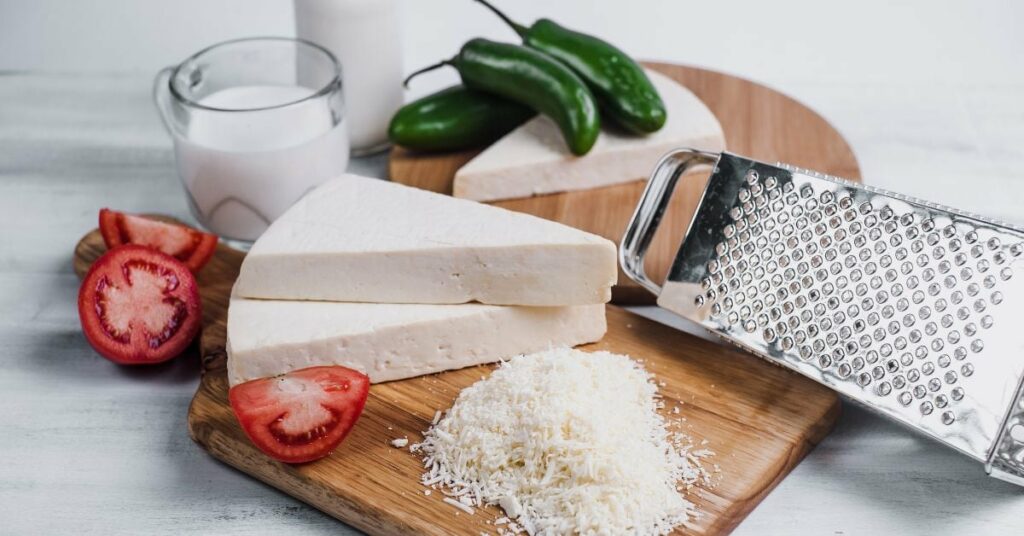
Cotija is a hard, crumbly cheese from Mexico. It’s named after the town of Cotija in the Mexican state of Michoacán where it was first made.
Cotija cheese is traditionally made from raw cow’s milk, and it is salty, strong-flavored, and slightly pungent. The cheese is usually white or pale yellow, and it can range in texture depending on its age. Fresh Cotija cheese is softer and often used for stuffing enchiladas or sprinkling on beans. Aged Cotija cheese is harder and more crumbly, similar to Parmesan cheese, and is often grated over dishes.
Due to its robust flavor, Cotija cheese is widely used in Mexican cuisine. It’s often sprinkled over dishes like soups, salads, tacos, and beans to add a burst of flavor.
What is Cotija cheese similar to?
Cotija cheese is often compared to Parmesan cheese, hence it’s often referred to as the “Mexican Parmesan.”
Both cheeses are dry, aged, and have a strong, salty flavor. However, Cotija cheese is typically more crumbly than Parmesan.
The two can often be used interchangeably in recipes, though they do each bring their unique flavors to dishes.
Another similar cheese is Feta, which shares Cotija’s crumbly texture and tangy flavor, although Feta is usually softer and less salty.
Is Cotija similar to Parmesan?
Yes, Cotija cheese is indeed similar to Parmesan in certain ways. Both cheeses are often used as topping cheeses due to their strong flavors and ability to elevate the taste of various dishes.
| Feature | Parmesan Cheese | Cotija Cheese |
|---|---|---|
| Origin | Italy | Mexico |
| Milk Source | Cow’s milk | Cow’s milk |
| Texture | Hard, granular | Dry and crumbly |
| Flavor | Strong, nutty, tangy | Strong, salty, slightly sour |
| Aging | Aged for 12-36 months | Aged for 3-12 months |
| Usage | Often used in pasta, risotto, and as a topping on various dishes | Frequently sprinkled on top of Mexican dishes like tacos, elote (corn), and beans |
Cotija is a good grating cheese with a crumbly texture and a strong, salty flavor. Parmesan, prepared from raw cow’s milk, also has a salty flavor and a hard, crumbly texture. However, Parmesan tends to have a stronger flavor compared to Cotija and also carries fruity and nutty undertones.
Despite these similarities, there are key differences between the two. Parmesan has a nutty, tangy flavor with a granular texture, while Cotija has a more pungent, sour flavor. Some culinary enthusiasts argue that Parmesan is very different and shouldn’t be substituted for Cotija.
In conclusion, while Cotija and Parmesan share some characteristics, they each bring their unique flavors and textures to the table, affecting how they pair with different dishes.
>> Click here to read our in-depth guide on Parmesan
Is Feta and Cotija cheese the same?
While Feta and Cotija cheese share some similarities, they are not the same. Both cheeses have a crumbly texture and offer a tangy flavor to dishes. However, they come from different parts of the world and have distinct characteristics.
| Feature | Feta Cheese | Cotija Cheese |
|---|---|---|
| Origin | Greece | Mexico |
| Milk Source | Sheep’s milk or a mix of sheep’s and goat’s milk | Cow’s milk |
| Texture | Creamy yet crumbly | Dry and crumbly |
| Flavor | Tangy, slightly sour | Strong, salty |
| Saltiness | Less salty | More salty |
| Usage | Often used in salads, pastries, and on top of dishes | Frequently sprinkled on top of Mexican dishes like tacos, elote (corn), and beans |
Feta:
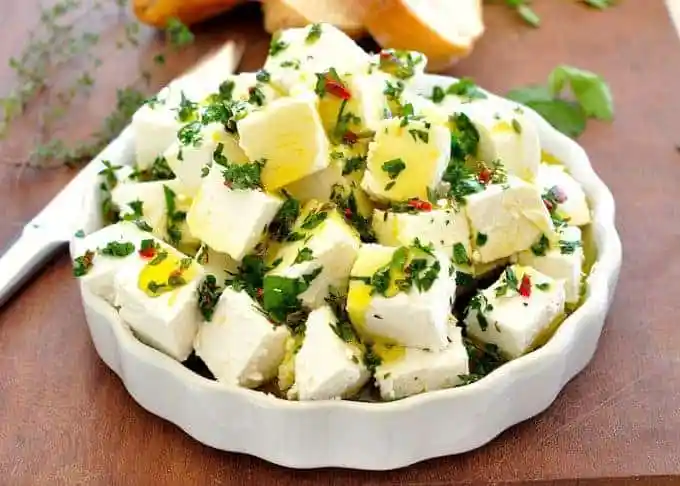
Feta originates from Greece and is typically made from sheep’s milk or a mix of sheep’s and goat’s milk. It’s softer and usually less salty than Cotija cheese. Feta is known for its creamy yet crumbly texture and tangy, slightly sour flavor.
Cotija:

Cotija, on the other hand, hails from Mexico and is made from cow’s milk. It’s often referred to as “Mexican Parmesan” due to its dry, crumbly texture, and strong, salty flavor. Cotija cheese is typically harder and more crumbly than feta.
While both cheeses can sometimes be used interchangeably in recipes, they each bring their own unique taste and texture to the table.
>> Click here to read our in-depth guide on Feta
What is the best substitute for Cotija cheese?
Feta cheese is the best like-for-like substitute for Cotija cheese. It shares a similar texture and saltiness, making it a good alternative in most recipes.
However, the best substitute must also depend on the specific characteristics you’re looking to replicate.
For instance, if you’re seeking a similar texture, Goat’s cheese, cottage cheese, and Ricotta Salata are considered good alternatives.
If the sharp and funky flavor of Cotija is what you’re trying to replace, Romano cheese could be a suitable substitute.
For aged Cotija cheese, Parmesan or Romano can be used as substitutes due to their similar hard texture and strong flavor.
Does Cotija cheese taste like Mozzarella?
No, Cotija cheese doesn’t taste like Mozzarella. They are quite different in both flavor and texture.
Mozzarella is an Italian cheese that is known for its mild, slightly sweet flavor and smooth, creamy texture. It’s a semi-soft cheese that melts well, making it a popular choice for pizzas and lasagnas.
>> Click here to read our in-depth guide on Mozzarella
Why is Cotija cheese so good?
Cotija cheese is highly regarded for several reasons:
| Feature | Description |
|---|---|
| Unique Flavor | Cotija cheese has a robust, salty flavor that’s somewhat similar to feta or Parmesan. This strong, tangy taste can add depth and complexity to a wide range of dishes. |
| Versatile Texture | Cotija cheese can be crumbly or firm, depending on its age. This makes it a versatile choice that can be grated, crumbled, or sliced to suit various culinary applications. |
| Enhances Dishes | Its distinctive flavor profile helps to enhance the taste of many foods. It’s often used in Mexican cuisine, where it’s sprinkled over dishes like tacos, elote (grilled corn), and beans to add a burst of flavor. |
| Rich Tradition | Named after the town of Cotija in Michoacán, Mexico, Cotija cheese is part of a rich culinary tradition. Enjoying Cotija cheese allows you to experience a piece of this heritage. |
| Nutritional Value | Like many cheeses, Cotija cheese is a good source of protein and calcium, contributing to its overall nutritional value. |
Is Cotija cheese healthy?
Benefits:
- Nutritional Value: Cotija cheese is a good source of protein, calcium, potassium, and vitamin A. It provides over 30% of the daily value for calcium. It also contains vitamins B2 and B12.
- Suitable for Certain Diets: Due to its high fat and low carbohydrate contents, Cotija cheese can be a good option for people following a ketogenic diet.
Drawbacks:
- High Sodium Content: Cotija cheese has three times as much sodium compared to some other cheeses. This can be a concern for people watching their sodium intake.
- High in Fat: While the high-fat content makes it suitable for certain diets like keto, it can be a downside for those trying to limit their fat intake.
Also read: Savor the Flavor: 20 Cheeses with the Least Lactose
Cotija Nutrition Facts
| Nutrient | Quantity per 100g |
|---|---|
| Calories | 366 |
| Total Fat | 30g |
| Carbohydrates | 4g |
| Protein | 20g |
| Fiber | 0g |
| Sugar | 0g |
What goes well with Cotija cheese? Pairing guide
Food that goes well with Cotija cheese
| Food Category | Foods |
|---|---|
| Main Dish | Chilaquiles Scramble, Weeknight Shrimp Tacos, Spiced Beef and Refried Bean Tostadas |
| Side Dish | Mexican Corn Dip, No-Brainer Corn Salad, Grilled Corn Tiger Salad |
| Soup | Mexican Rice Soup (Sopa Aguada de Arroz), Spicy Slow Cooker Black Bean Soup with Cotija Cornbread Croutons |
| Snacks/Appetizers | Salsa Roja, Chile Rellenos, Chorizo and Walnut-Stuffed Mushrooms |
| Pasta | Pasta, Elote Pasta Carbonara |
| Salads | Chili and Cotija Cheese Cauliflower |
| Breads/Biscuits | Biscuits |
Also read: 11 Best Crackers that Pair Well with Cheese
Beverage that goes well with Cotija cheese
| Beverage Category | Beverages |
|---|---|
| Cocktail | Mexican Street Corn Margarita, Corona Sunrise (TikTok Drink) |
| Wine | Riesling |
Also read: Top 10 Champagne & Cheese Pairings to Try at Least Once
The History of Cotija
Cotija cheese, named after the town of Cotija in the Mexican state of Michoacán, has a long and rich history. It’s an aged cheese, made from cow’s milk, that is salty, crumbly, and usually sold in large rounds.
This cheese is traditionally made by artisanal cheesemakers, using the same methods that have been passed down through generations. The exact origins of Cotija cheese are not well-documented but it’s believed to have been produced in the region for hundreds of years.
Cotija cheese was originally made during the rainy summer months when the cows were able to graze on rich grass resulting in high-quality milk. The cheese was then aged over the dry winter months and ready to be consumed by spring. This seasonal cycle contributed to the unique flavor and texture of the cheese.
The town of Cotija is situated in the mountains, where the climate is ideal for the production and aging of this type of cheese. The altitude, humidity, and temperature all contribute to its distinctive character.
Over the years, Cotija cheese has become a staple in Mexican cuisine, used to enhance the flavor of dishes like enchiladas, tostadas, tacos, and salads.
Despite its popularity in Mexico and abroad, the production of Cotija cheese remains a mostly local tradition, with most of the cheese still being produced in the state of Michoacán.
Also read: 12 Most Popular Cheeses in the World
Frequently Asked Questions
1. Will Cotija cheese melt?
A unique characteristic that sets Cotija apart from many other cheeses is that it doesn’t melt.
Instead of turning gooey and stretchy, Cotija cheese softens slightly, exuding a delicious, salty flavor while retaining its granular texture.
This non-melting quality makes it an excellent choice for sprinkling atop hot dishes like enchiladas, tacos, or grilled corn, where it adds a delightful savory note without losing its distinct character.
2. Does Cotija cheese crumble easily?
Absolutely, Cotija is well-known for being a crumbling cheese. This firm, aged cheese from Mexico shares a texture similar to that of Parmesan or Feta, allowing it to be easily broken apart with your fingers or grated with a cheese grater.
Its crumbly nature is one of the features that make it so versatile in cooking.
Whether you’re sprinkling it over a spicy taco, scattering it across a fresh salad, or incorporating it into a savory baked dish, Cotija cheese effortlessly breaks down into delightful, salty morsels that enhance the flavor profile of your meal without overpowering it.
3. How should I store Cotija cheese?
Storing Cotija cheese properly is essential to maintain its unique flavor and texture. To keep it fresh, wrap the cheese tightly in wax or parchment paper first, then loosely in plastic wrap or place it in a sealable plastic bag.
This method allows the cheese to breathe while keeping it from drying out.
Store your wrapped Cotija cheese in the vegetable drawer of your refrigerator, where the temperature is relatively stable.
If you notice any mold, simply cut it off; the rest of the cheese is still good to use.
Remember, Cotija cheese is a hard, aged cheese, so it can last several weeks when stored correctly. Always let the cheese come to room temperature before using it to fully enjoy its rich, salty flavor.
Also read: What’s the Best Way to Store Cheese?
4. Is Cotija a salty cheese?
Indeed, Cotija is a notably salty cheese. Its saltiness is often more intense than that of many other cheeses, a characteristic that has earned it widespread popularity.
Regardless of its age, Cotija’s bold, tangy, and salty flavor makes it a fantastic addition to a variety of dishes, especially those from Mexican cuisine.
5. Is Cotija suitable for pregnant women?
Yes, Cotija cheese is generally safe for pregnant women to consume.
This Mexican hard cheese is made from cow’s milk and often pasteurized, which makes it suitable for expectant mothers. Pasteurization is a process that kills harmful bacteria, including Listeria, which can pose risks during pregnancy.
However, as with any food product, it’s crucial to ensure the Cotija cheese you’re consuming is indeed made with pasteurized milk.
Additionally, if you have a dairy allergy or lactose intolerance, it may cause discomfort. As always, when in doubt, it’s best to consult with your healthcare provider before incorporating any new foods into your diet during pregnancy.
Also read:
- A Guide to Provolone: A Masterclass in Flavor and Versatility
- Pecorino Romano: The Ultimate Guide to Italy’s Age-Old Cheese
- Utz Cheese Balls: The Ultimate Guide (Taste the Tradition)
- A Guide to Havarti: The Star Cheese of the Culinary World
- The Ultimate Guide to Gruyère: A Swiss Delicacy
- Best Wine and Cheese Pairings: The Ultimate Guide
- Cheese Curds: The Unsung Heroes of the Dairy World

